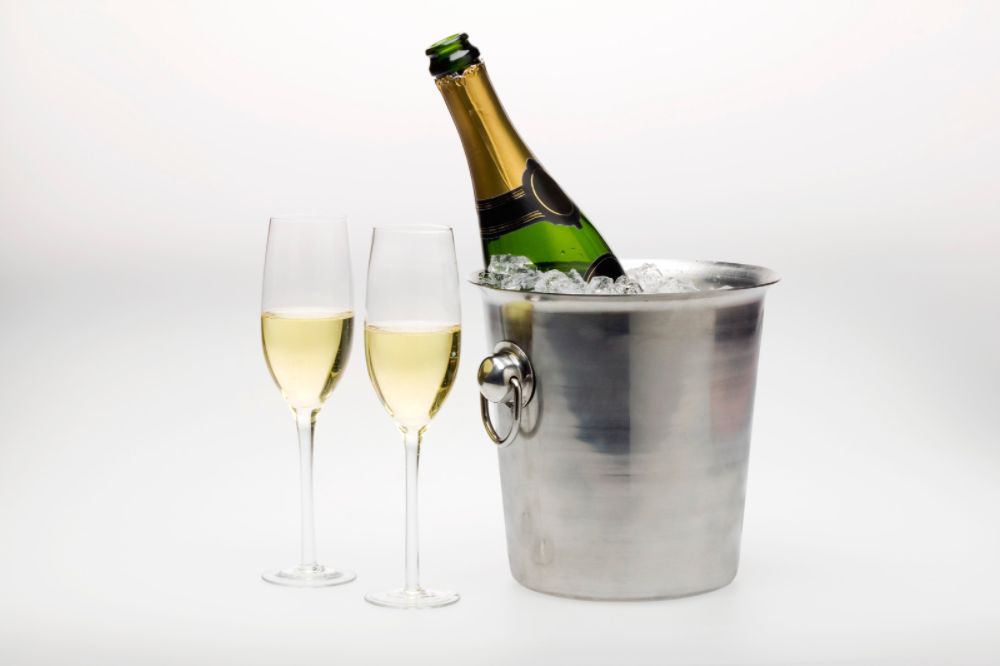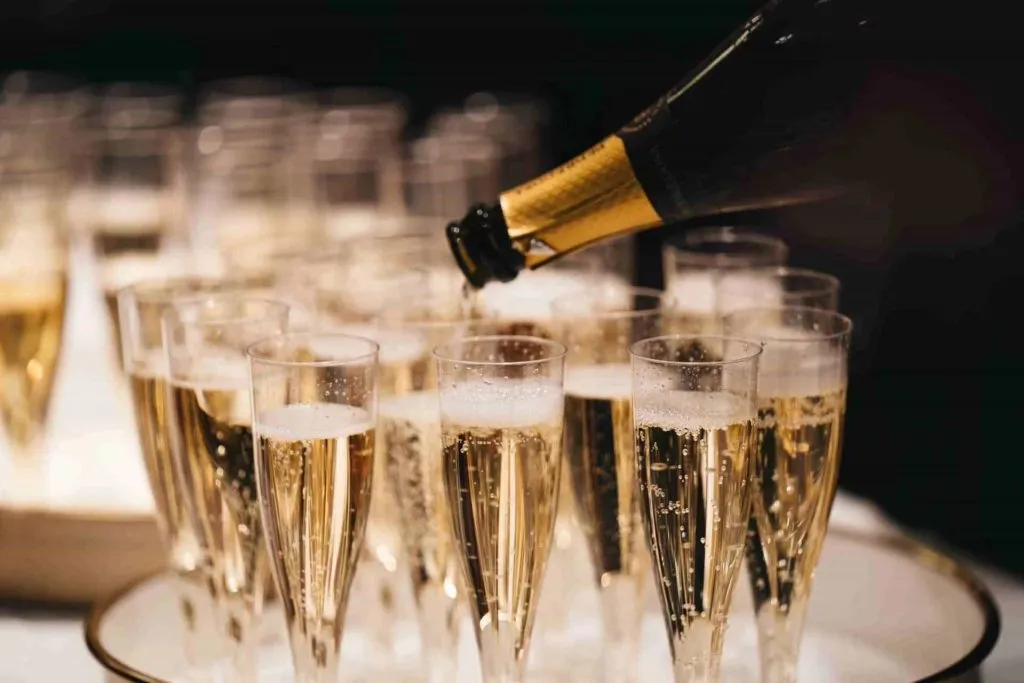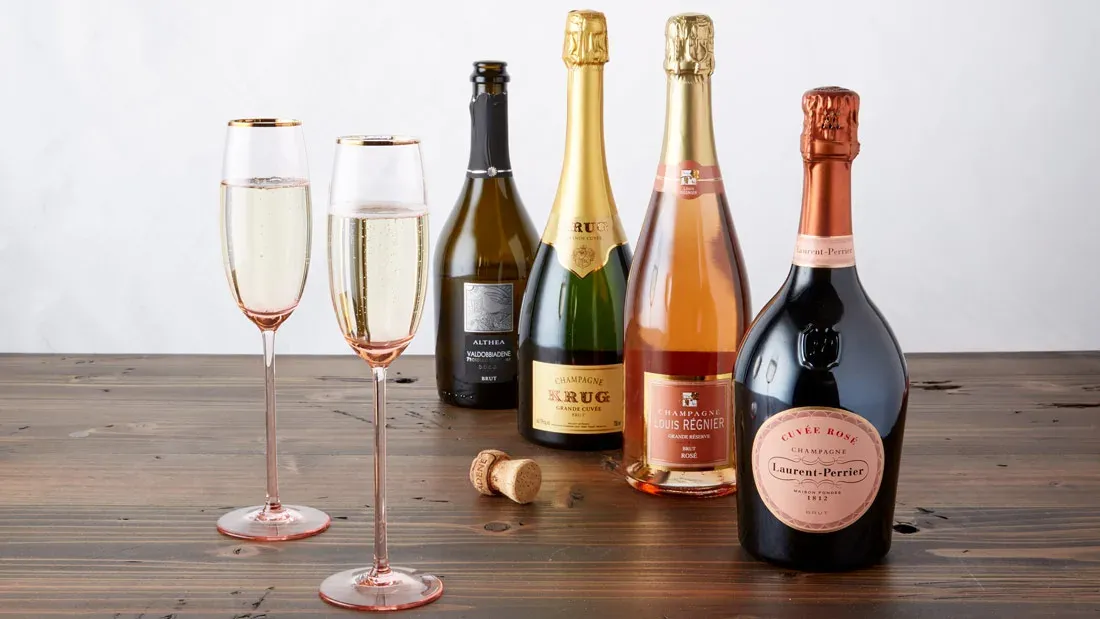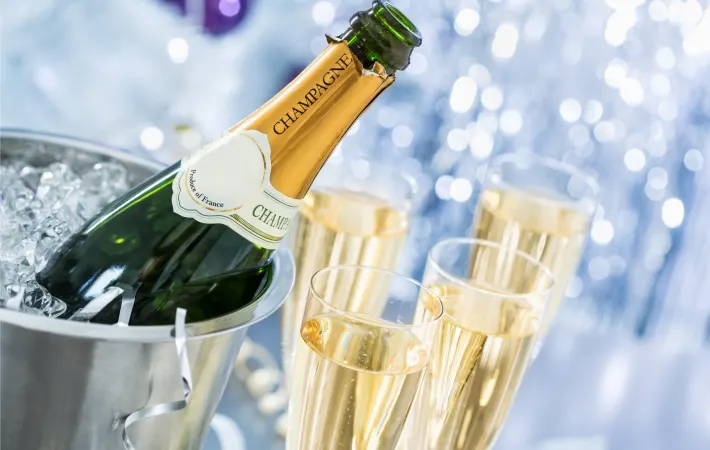Selecting the right glass champagne bottle manufacturer is critical for champagne producers, demanding bottles that meet exacting standards for quality, pressure resistance, and presentation. As we look to 2025, several established glassmakers lead the market in supplying the champagne industry. These manufacturers distinguish themselves through significant production capacity, specialized expertise in premium bottle design and finishing, stringent quality control, and the ability to offer customization essential for prestigious champagne brands.

Table of Contents
TP Glass Bottle: Crafting Excellence in Champagne Packaging
TP Glass Bottle specializes in premium champagne bottles for wineries, sparkling wine producers, and luxury beverage brands worldwide. Known for blending technical expertise with aesthetic innovation, they deliver packaging solutions where performance meets distinctive design.
Engineered for Pressure Performance
Champagne bottles face intense internal pressure (5-6 bar), demanding exceptional strength. TP Glass Bottle meets this challenge through specialized glass formulations and precision manufacturing. Their controlled annealing process ensures structural integrity while maintaining safety standards critical for sparkling wines.
Customization Capabilities
Beyond the classic champagne silhouette – featuring sloping shoulders, elongated necks, and signature punt bases – TP Glass Bottle offers extensive customization. Clients select from standard 750ml formats to Magnum (1.5L) and Jeroboam (3L) sizes. Glass color options include traditional UV-protective green, amber, crystal clear, or bespoke hues. Further personalization covers neck finishes, punt depth variations, shoulder contours, and specialized surface treatments like embossing, sandblasting, or metallic hot-stamping.
Quality and Sustainability
Every bottle uses food-grade, non-toxic glass meeting international safety standards. Rigorous quality checks ensure consistent wall thickness and precise mouth dimensions for secure cork-and-cage closures. These bottles are fully recyclable, offering eco-conscious luxury without compromising the premium presentation brands require.
Brand Enhancement
Advanced decoration techniques transform bottles into brand statements. Durable silk-screen printing, debossing, and high-resolution surface treatments create distinctive shelf presence while protecting the champagne’s quality and bubble retention.
Partner Value
TP Glass Bottle balances technical mastery with flexible production, handling both high-volume orders and intricate custom projects. Their focus on material safety, defect-free manufacturing, and sustainable practices makes them a trusted partner for brands seeking packaging worthy of exceptional sparkling wines.
O-I Glass (Owens-Illinois): A Leader in Champagne Bottle Manufacturing
O-I Glass, or Owens-Illinois, ranks among the world’s largest and most innovative glass packaging producers. Founded in 1903, the company pioneered automated glass manufacturing and remains vital to the champagne and sparkling wine industry today.
Key Champagne & Sparkling wine bottle Specifications
O-I offers diverse champagne bottle options tailored to sparkling wine producers. Their standard 750 ml bottle (brimfull capacity: 782.6 ml) stands 298.8 mm tall with an 84.7 mm diameter and weighs 680 g. Designed to withstand carbonation up to 5.0 g/l, it uses a Sparkling Wine Crown Seal (GCS-56421). Palletization fits 960 containers per pallet (gross weight: 652.8 kg; dimensions: 1090×1420×1351 mm). These bottles are non-refillable and lack label protection.
Product Variety and Pricing
O-I’s catalog features multiple finishes and popular colors like Antique Green and Flint. Their 2025 pricing remains competitive, with 750 ml sparkling bottles typically ranging from $11.62 to $12.85 per case. Final costs vary based on glass color and finish specifications.
Customization and Brand Partnership
O-I excels in custom bottle development, offering unique shapes, extensive color options, and advanced printing/finishing techniques. Their rapid prototyping streamlines new design testing. Specialized embossing and colored glass enhance brand identity, with collaborations spanning iconic beverage brands worldwide.
Sustainability and Manufacturing Excellence
O-I prioritizes sustainable production through recycled materials and energy-efficient technology, aiming to deliver the market’s most eco-friendly glass containers. Their global operations serve clients across Australia, Europe, the Americas, and beyond.
Recent Innovations and Design Highlights
Notable creations include the matte black Varvaglione bottle, showcasing O-I’s ability to merge distinctive aesthetics with premium branding.
Flexible Order Scale
O-I accommodates orders of all sizes—from industrial-scale runs to boutique custom projects—serving both major wineries and small producers.
Why O-I Stands Out
As a global innovation leader in sparkling wine packaging, O-I combines an extensive catalog (spanning sizes, colors, and finishes) with advances in sustainable automation. Their collaborative approach with beverage brands yields signature bottles using cutting-edge design and prototyping technology.

Ardagh Group: Wine Bottle Manufacturing in 2025
Ardagh Group remains a major force in glass champagne bottle production during 2025. Operating 61 facilities across 16 countries with approximately 20,000 employees, the company generates $9.4 billion in global sales. In North America alone – where Ardagh ranks as the second-largest glass container manufacturer – 39 sites employ 15,000 staff and contribute $4.6 billion to total revenue.
Key production hubs span Dublin, Luxembourg, Maulburg, Amsterdam, Chicago, São Paulo, and Cape Town. Strategic U.S. locations in Madera, Fairfield, Fishers, Port Allegany, and Seattle enable efficient domestic wine bottle manufacturing and local customer support.
Ardagh’s upcoming July 2025 launch of a 300g lightweight wine bottle marks a significant sustainability advancement. This design maintains premium aesthetics while reducing material usage. Their extensive catalog features UV-protective brown and green bottles alongside custom textured, embossed, and decorated options that help brands stand out. The ECO Series® line further demonstrates their commitment to fully recyclable packaging.
Through lightweighting initiatives and carbon reduction programs, Ardagh maintains technological leadership while serving major partners like Coca-Cola, Danone, AB InBev, Heineken, and Diageo across mass-market and luxury segments.
Verallia: Sustainable Champagne Bottle Innovations
Verallia stands out among top champagne bottle manufacturers in 2025 through pioneering sustainable solutions. Their August 2025 launch of a champagne bottle made from 100% PCR (post-consumer recycled) glass sets new industry standards for circular packaging in the luxury segment.
The company has achieved a 3% average weight reduction across its standard bottles – approximately 35 grams lighter than previous generations. This translates to lower shipping emissions without compromising strength or visual appeal. Collaborative projects like the eco-designed bottles developed with Birgand Boissons and the lightweight green bottle created for Champagne Telmont demonstrate practical implementation of these innovations.
Verallia’s specialized offerings include the Champagne USA Bottle featuring a distinctive 26 crown closure for premium sparkling wines. As one of the world’s top eight champagne bottle producers, they maintain this position through significant R&D investments, comprehensive green certifications, and a dedicated 2025 CSR roadmap focused on lightweighting, recycled content optimization, and eco-design principles.
Growing demand from premium beverage brands confirms Verallia’s role as a sustainability leader in luxury glass packaging.

Saverglass: Premium Champagne Bottle Leadership in 2025
Saverglass maintains its position as a global leader in luxury champagne bottle production, serving premium spirits and wine brands across three continents. The company’s strength lies in crafting bottles for high-end champagne and sparkling wine segments.
Advanced Production & Sustainability
Significant facility upgrades drive Saverglass’ 2025 capabilities. Their Acatlán plant in Mexico doubled daily output to 400 tons after launching Furnace XIII in 2023. The site’s switch to nuclear power reduced carbon emissions by 6%, complementing their late-2023 launch of a low-carbon hybrid furnace. North American demand is served through their Fairfield, California facility.
Saverglass prioritizes eco-conscious practices through high cullet (recycled glass) usage across all plants. This approach conserves raw materials like sand and lime while lowering melting energy requirements. Their support for Europe’s 90% colored glass recycling target by 2030 aligns with bottle lightweighting initiatives and clean energy transitions.
Product Range & Customization
The company offers one of the industry’s broadest champagne bottle size portfolios. Options range from small Piccolo (200ml) formats to mid-sizes like 187ml, 250ml “Chopine”, and 500ml “Désirée” – popular for on-the-go consumption. Large-format bottles include Magnum (1.5L), Jeroboam (3L), Rehoboam (4.5L), and Methuselah (6L) sizes weighing up to 5.5kg, favored for aging wines and premium retail display.
Saverglass excels in creating both standard and custom designs, providing unique packaging solutions that enhance brand distinction for luxury clients. Continuous facility investments ensure capacity meets evolving market demands.
Market Position
Through strategic technology investments and sustainability commitments, Saverglass combines large-scale production with environmental responsibility. Their extensive size range and quality focus serve traditional and emerging markets alike, setting industry benchmarks in eco-conscious luxury glass manufacturing.
Vidrala: Leading Lightweight & Sustainable Champagne Bottles in 2025
Vidrala stands among Europe’s top innovators in champagne bottle manufacturing, recognized globally for its commitment to sustainable design and strategic R&D investments.
Groundbreaking Lightweight Technology
The company made waves in August 2025 with its 260G bottle launch – potentially the world’s lightest 75cl glass format at just 260 grams. This breakthrough weighs less than half of standard champagne bottles (typically 570-900g) while incorporating up to 80% recycled glass. The approach significantly reduces carbon footprint without compromising premium aesthetics.
Collaborative Innovation Model
Vidrala’s development process emphasizes cross-industry partnerships. The 260G bottle resulted from collaboration between their Portuguese team, LiDA Design Laboratory, and external research centers. This synergy extends to talent cultivation through their annual Master Glass Vidrala Design Contest (open to students across Spain, Portugal, Ireland, and UK), fostering fresh ideas for sparkling wine packaging.
Product Range & Safety Features
Their 2025 catalog includes diverse champagne and sparkling wine bottles like the 570g Claudia (292mm height), 775g Traditional Method, 835g Opera Natura, and 900g Sparkling format. The 1.5L Opera Magnum caters to large-format needs at 1500g. Lighter options like the Cuve Close Natura (570g) balance performance with eco-conscious appeal, meeting growing demand for sustainable premium packaging.
Industry Recognition & Consumer Trust
Vidrala’s 260G bottle gained international visibility at Expo 2025 Osaka’s Portuguese Pavilion, showcasing leadership in lightweight sustainable glass. Their designs prioritize safety and visual excellence – critical for pressure-resistant champagne packaging – aligning with consumer sentiment where over 70% consider glass the safest container for preserving taste and quality.
Market Position
Through award-winning innovations and educational initiatives, Vidrala demonstrates how environmental responsibility and cutting-edge technology can coexist in luxury glass manufacturing. Their lightweight advancements and collaborative ethos position them as forward-thinking partners for brands prioritizing sustainability.

Industry Trends & Outlook for 2025
Lighter, Greener Glass Bottle Innovations
2025 looks set to be a pivotal year for champagne bottle design. Major glass manufacturers are pushing hard to create lighter, eco-friendly bottles. Champagne Telmont and Verallia, for instance, recently unveiled an 800g champagne bottle—down from the traditional 835g standard. This shift carries real weight: bottle production alone contributes roughly 30% of the Champagne industry’s carbon footprint. Over the past decade, average bottle weight has already dropped from about 900g. Now, trimming further becomes trickier. These bottles must withstand intense pressure—nearly double that of a car tire—demanding careful engineering to balance sustainability and safety.
Why Sustainability and Custom Options Matter
Sourcing lighter yet stronger bottles has become a top priority across the industry. Manufacturers now offer diverse sizes, from minis and prosecco formats to classic 750ml bottles. For brands aiming to stand out, flexibility is key. Offering custom designs and accommodating orders of all sizes helps capture attention in a crowded market. More brands are leaning toward certified suppliers with robust global networks, valuing both reliability and the ability to adapt to fast-changing demands.
Market Growth and Consumer Preferences
The global Champagne market is projected to hit $8.06 billion in 2025, with a steady 5.1% CAGR pushing it to $13.26 billion by 2035. Consumer tastes are clearly evolving, with growing interest in premium, organic, and biodynamic champagnes. To meet this, leading houses are doubling down on sustainable practices, expanding digital sales channels, and launching innovative products like limited editions and new blends.
Navigating Market Swings and Rising Costs
Between 2022 and 2024, shipments dropped sharply by 55 million bottles to 271 million units. This volatility stems from multiple pressures: soaring glass and grape costs, inflation, global uncertainty, and shifting celebration habits. Rising bottle prices—driven by raw materials and energy—are pushing the industry toward fresh solutions. Innovating with materials, streamlining logistics, and building more resilient supply chains are becoming essential strategies.
Digital Sales and Customer Engagement
Digital transformation is reshaping how champagne connects with buyers. Established brands are upgrading online stores and experimenting with virtual tastings, making distinctive packaging and direct-to-consumer sales more vital than ever. In North America and Europe, producers are also collaborating and testing unconventional bottle formats to attract younger, eco-conscious drinkers—signaling a strategic shift in both product design and outreach.
Conclusion: The Future of Champagne Bottle Manufacturing
As we look toward 2025, the champagne bottle industry is defined by three critical advancements: aggressive sustainability initiatives (lightweighting, recycled content), precision-engineered pressure resistance, and unprecedented customization capabilities. Leading manufacturers like O-I, TP Glass Bottle drive innovation through eco-friendly production, collaborative R&D, and expanded design possibilities.
For brands seeking a partner that embodies these values, TP Glass Bottle delivers exceptional craftsmanship where technical mastery meets creative vision. As specialists in premium champagne glassware. Let us elevate your brand’s presence with bottles engineered for both shelf impact and sustainability.

